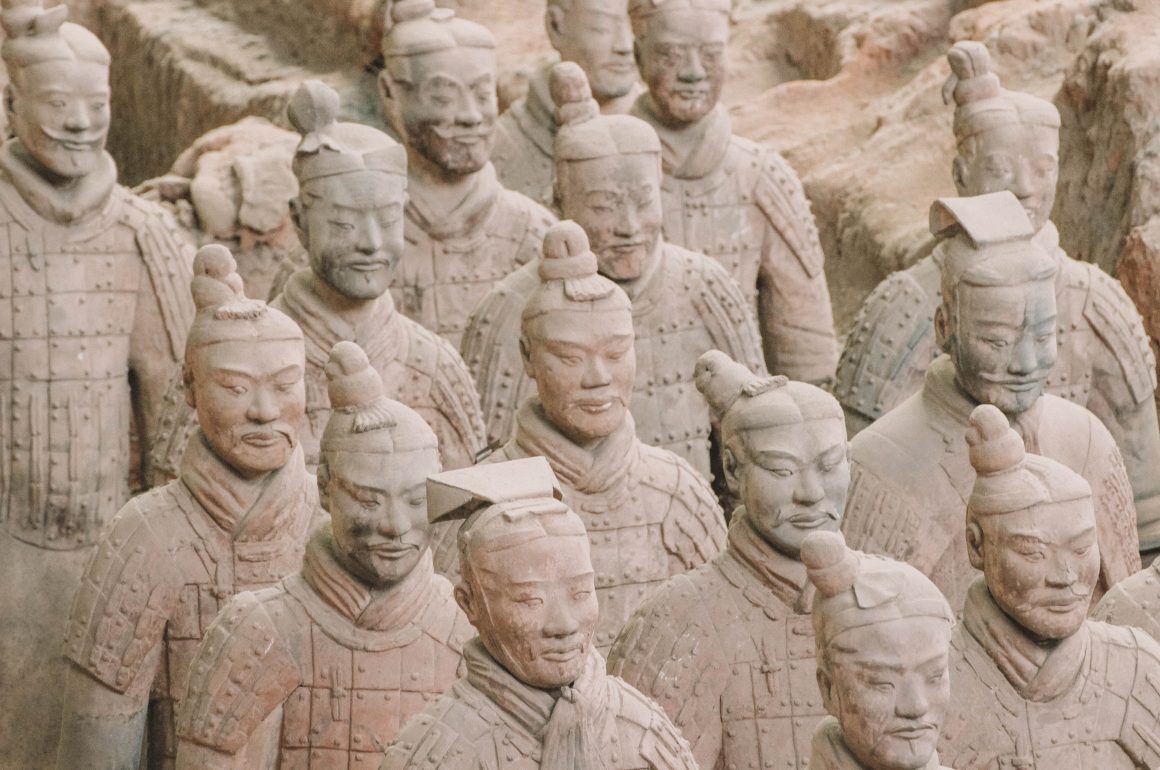
The noise level was incredible, people were running around like crazy, trust me – New Yorkers love running around all the time – but this was on another level. The area was super crowded, people were sitting all over the floors, waiting for their train. Compared to most of the locals in the city who looked relaxed, this felt like a total chaos. Half an hour later we finally found our ticket window and tried to collect our paper tickets which was not easy. It took another hour and at that time I realized for the first time we could miss our train! Facing that new situation we decided to speak to a woman who worked at the information, and thankfully spoke English, explained her our situation and asked for her help. Five minutes later we got our paper tickets – sometimes it’s good to be a tourist in another country. Provided with a few bottles of water and lots of food we made it into our train compartment, on time. A few minutes later the train left the station (on time!!) and the last thing we saw from Beijing was a spectacular, red sunset.
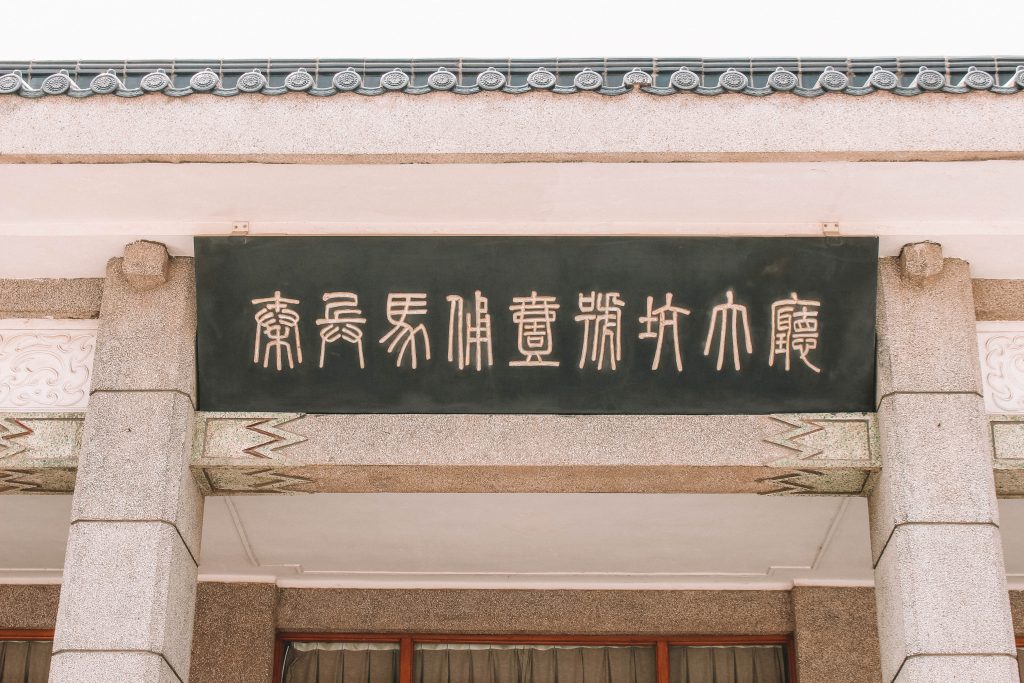
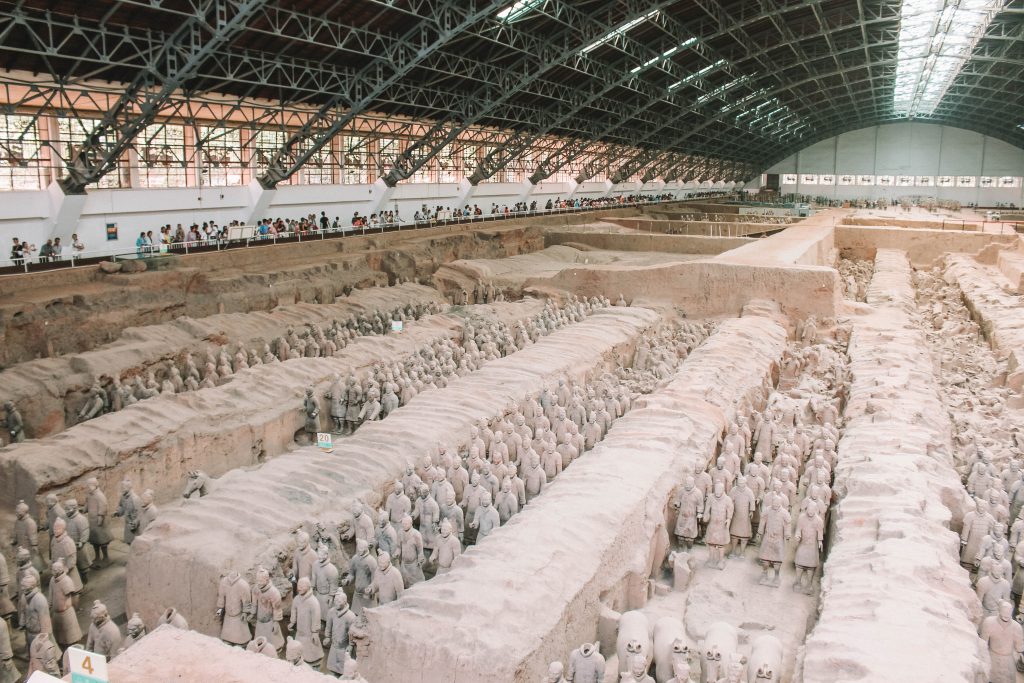
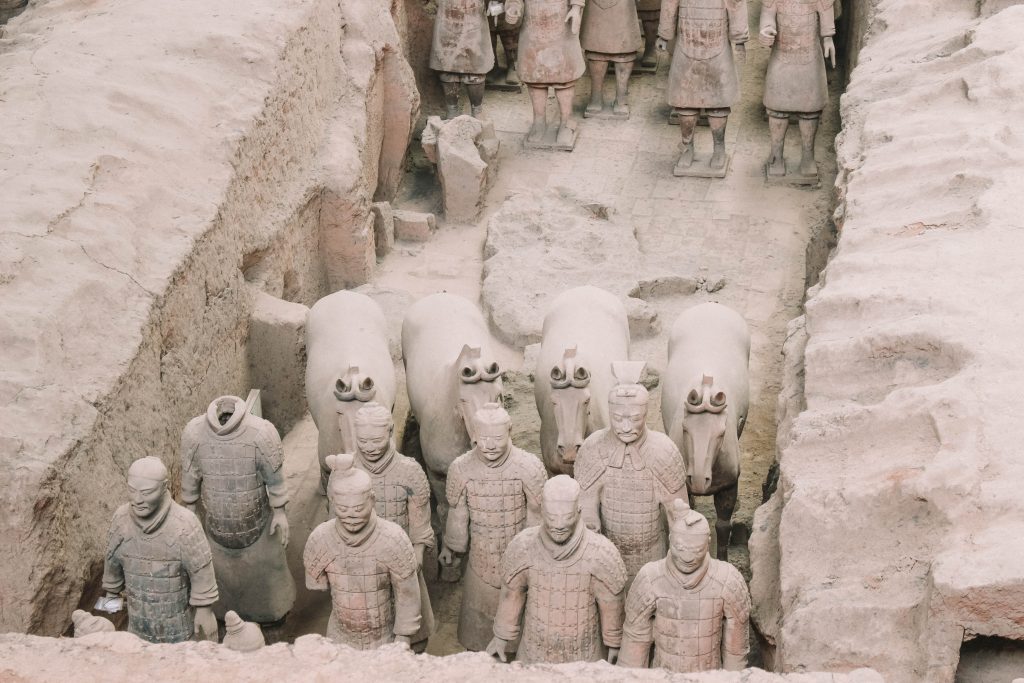
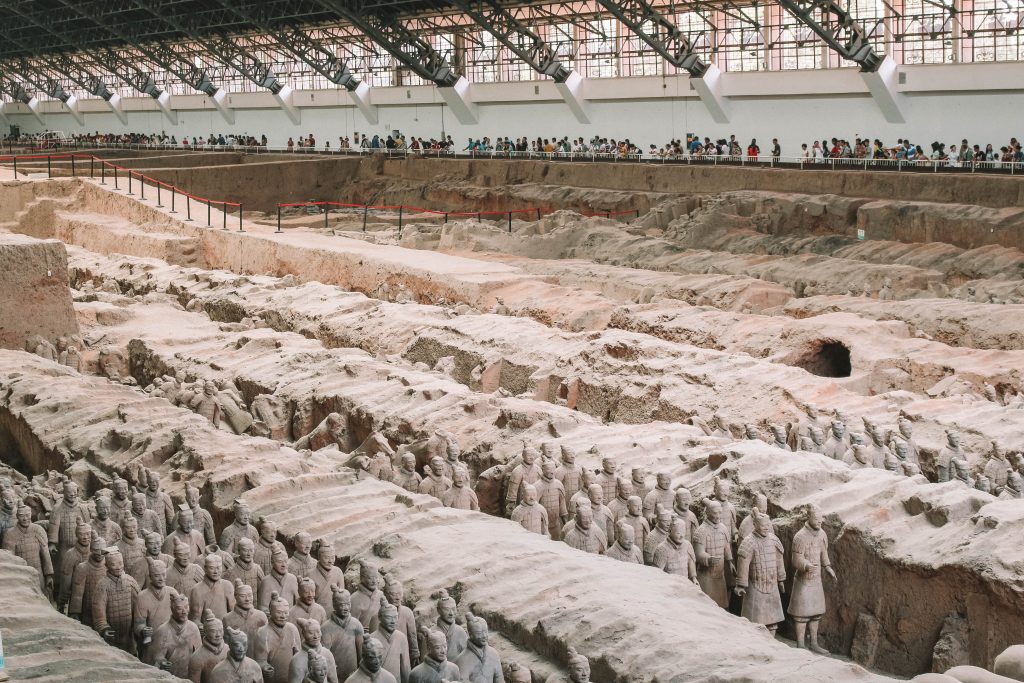
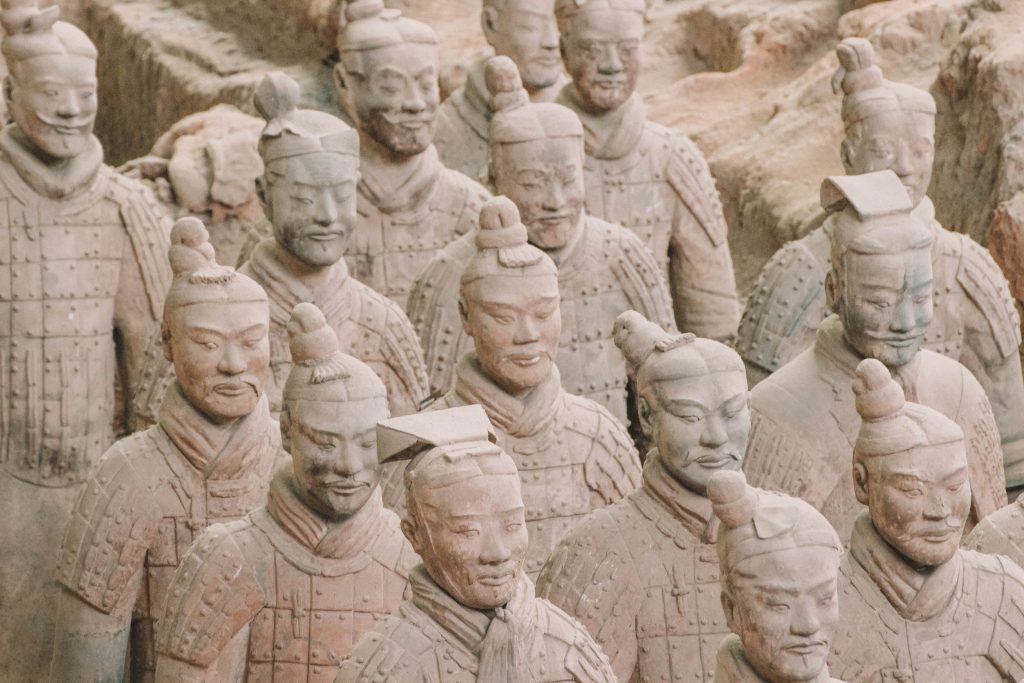
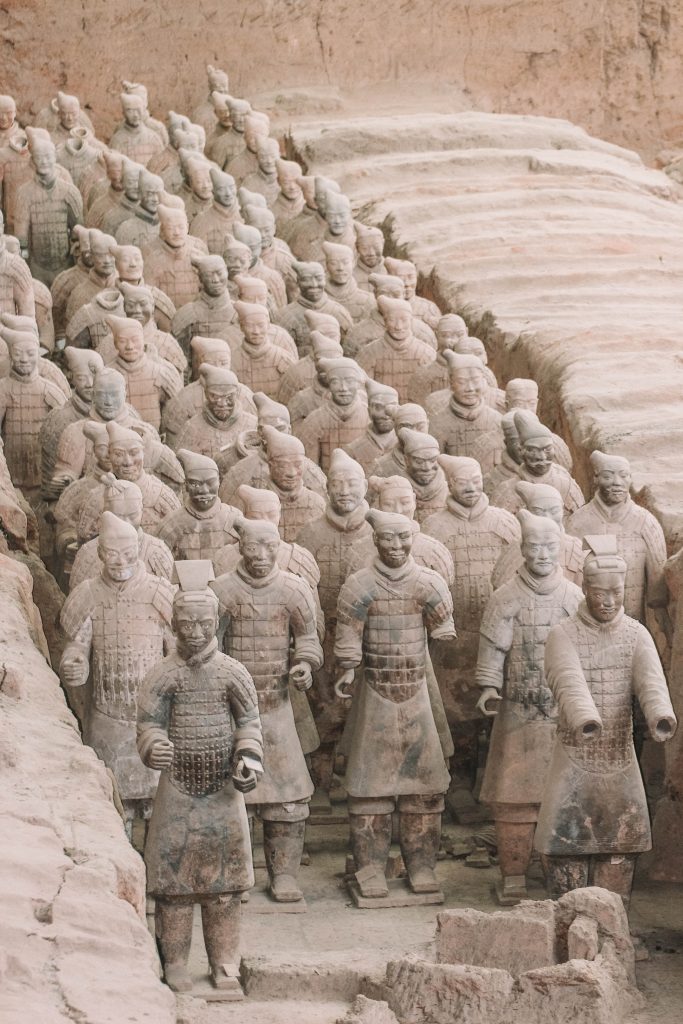
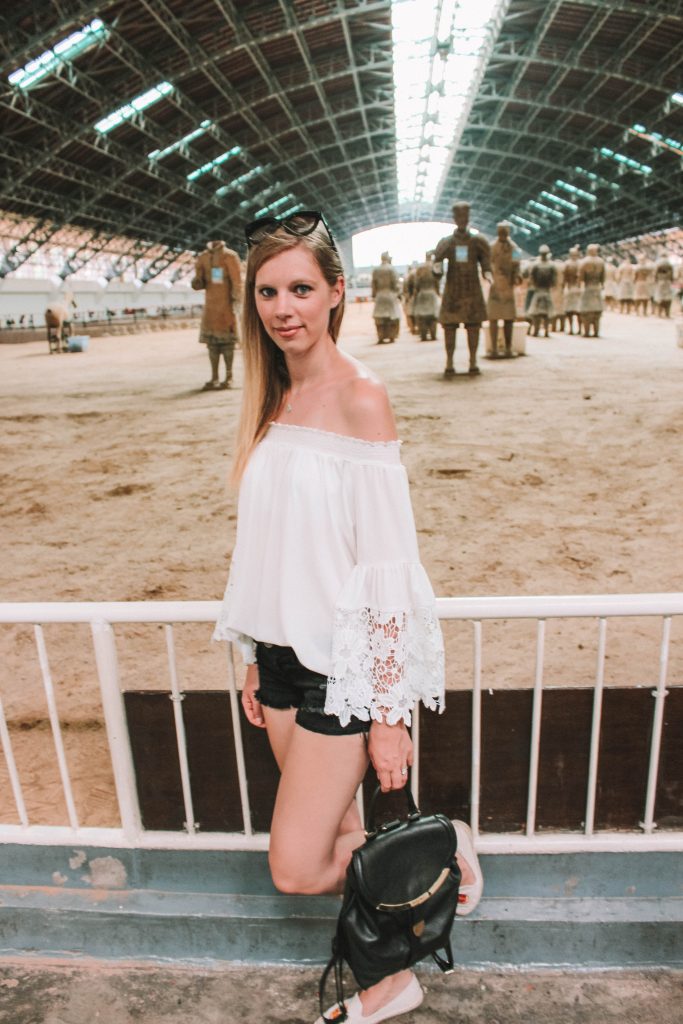
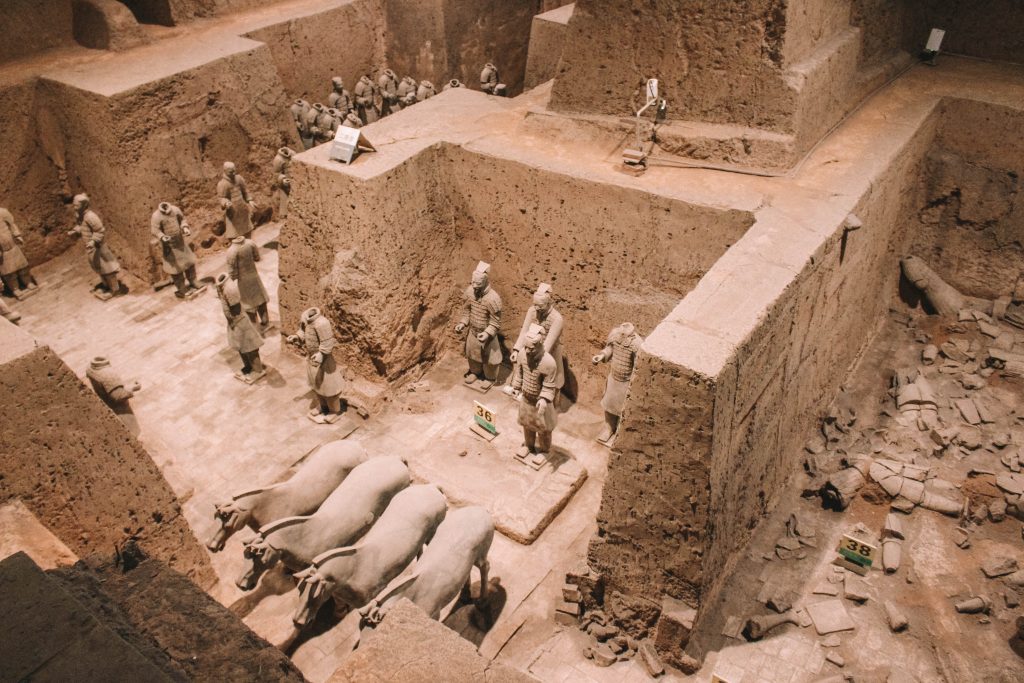
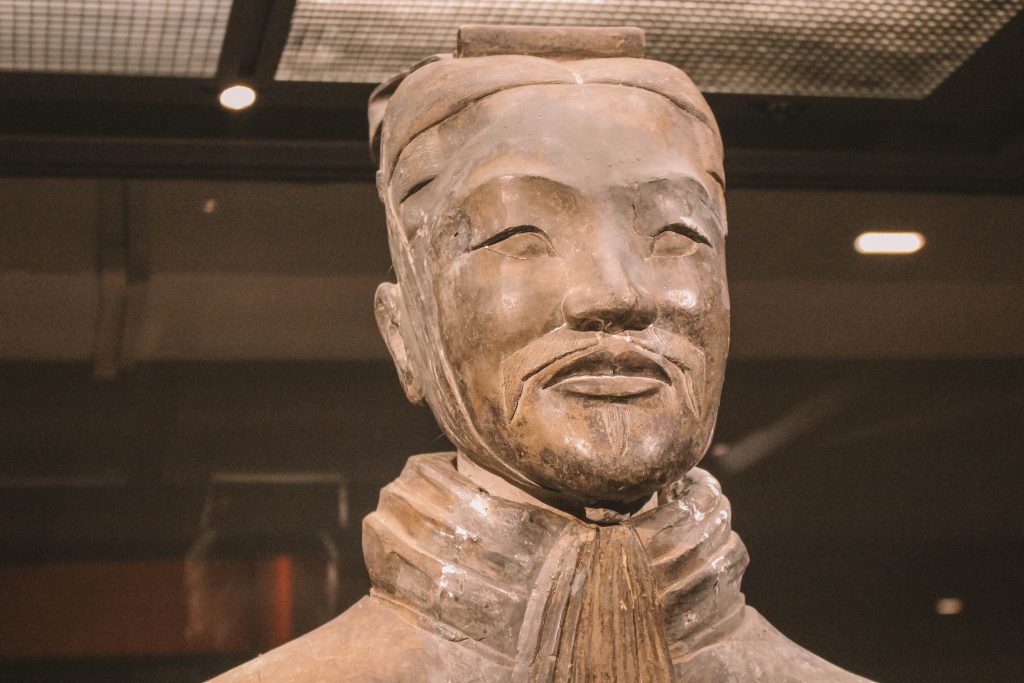
Our little home for the next 12 hours was a small 2-berth compartment with a tiny bathroom. We ate our dinner (which we bought at the railway station) and recalled the past 48 hours in Beijing. Filled with lots of memories I fell asleep and woke up on the next morning just in time before we arrived in Xi’an. Outside the railway station, we hailed a cab (it took around 10 tries though) and made it to our hotel. Our schedule for this day was strict and I felt relieved after we had arrived on time. The front desk staff from this hotel was super friendly and gave us our room earlier. A quick shower, an outfit change including a major breakfast later – we sat in a car together with our private driver and drove to Lintong. Lintong is one of nine districts of Xi’an where the Terracotta Army and the Mausoleum of Qin Shi Huang, the first Emperor of China, were discovered in 1974. Nowadays the whole area is a museum complex with different buildings built over “Pits” where you can see the major collection of terracotta sculptures. The Terracotta Army is an early form of funerary art, buried together with the Emperor around 210 BCE. The purpose was to protect the Emporer in his afterlife. Each terracotta figure, in accordance with the rank of the soldier, looks different. They vary in height, uniform, and hairstyle, but all of them are life-sized. Even the faces appear different for each individual figure, scholars have identified a few basic face shapes. The figures are of the following general types: armored warriors; unarmored infantrymen; cavalrymen who wear a pillbox hat; a helmeted driver of chariots with more armor protection; spear-carrying charioteers; kneeling archers who are armored; standing archers unarmored; as well as generals and other lower-ranking officers. The original color of the figures was a mix of bright pigments in pink, red, green, blue, black and brown, white and lilac. The colored lacquer finish and individual facial features would have given the figures a realistic feel. At present day, most of the color is gone and they had become greatly faded.
Nevertheless, this place was worth the whole trip. I was completely blown away how huge the collection in real life is. I’ve seen several documentaries on television and read a few articles about the warriors – but all the pictures which were running through my head at this time – were not able to picture this area in its real size. I have to admit that I thought nearly all of the soldiers are recovered, unfortunately, I was wrong, they are not. There are hundreds of fully recovered soldiers but most of them are still destroyed and lying behind the one-piece soldiers. It’s so sad to see something this age destroyed. I got the chance and spoke to a conservator. She told me that they are trying to rebuild and compose the others too. This whole process will take years and in some cases, it is impossible. Every single piece which was or still will be discovered in the future is super important to the people of China and their history. Everyone who works there is trying to give their best to keep this special part of history alive.
The largest part of the museum complex, which is around 750 ft long and 203 ft wide, contains the main army of more than 6,000 figures and can be found in Pit 1. After we had spent our day around the museum complex, we drove back to our hotel and had a comfortably evening in our hotel. Don’t get me wrong, Xi’an is a great city too, but we came only for one reason, The Terracotta Army, and had planned just one day there. After an amazing dinner in the comfort of our hotel, we got a couple of hours of sleep. Early next day we left Xi’an and took a plane to our third stop: Shanghai.



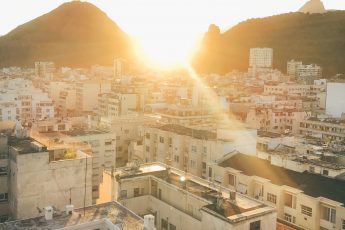
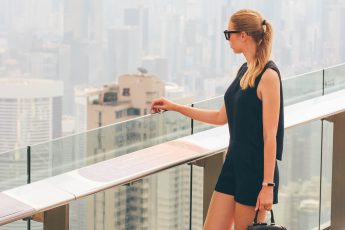





Leave a Comment